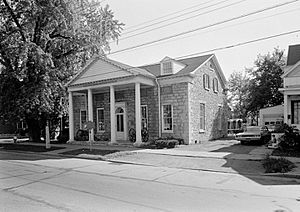Fellows v. Blacksmith facts for kids
Quick facts for kids Fellows v. Blacksmith |
|
|---|---|

|
|
| Argued January 15–17, 1857 Decided March 5, 1857 |
|
| Full case name | Joseph Fellows, Survivor of Robert Kendle v. Susan Blacksmith and Ely S. Parker, Administrators of John Blacksmith, Deceased |
| Citations | 60 U.S. 366 (more)
19 How. 366; 15 L. Ed. 684; 1856 U.S. LEXIS 463
|
| Prior history | Blacksmith v. Fellows, 7 N.Y. (3 Seld.) 401 (1852) |
| Holding | |
| (1) Native Americans may sue for trespass despite removal treaty because such treaties are enforceable only by the federal government (2) Enrolled treaties are conclusively valid |
|
| Court membership | |
| Case opinions | |
| Majority | Nelson, joined by unanimous |
| Laws applied | |
| Federal common law; Treaty of Buffalo Creek (1838) | |
Fellows v. Blacksmith was an important U.S. Supreme Court case in 1857. It was about Native American land rights. The case involved John Blacksmith, a member of the Tonawanda Seneca tribe. He sued a company called the Ogden Land Company.
Blacksmith had a sawmill on his land. Agents from the company forced him off his property. He sued them for illegally entering his land and for hurting him. The company claimed they had the right to the land because of a treaty. This treaty said the Seneca tribe would move from their land.
The Supreme Court decided that John Blacksmith was right. They said that even though a treaty existed, only the U.S. government could make the tribe move. Private companies could not force them off their land. The Court also said that once a treaty is officially signed and approved, it is considered final and valid.
This case was one of several times the Supreme Court, led by Chief Justice Taney, looked at Native American land rights. It was the first time since 1831 that a Native American person directly sued the Court over land ownership. A newspaper at the time, The New York Times, said the case was very important. It affected land ownership in a large part of New York State.
The lawyer for the Seneca people was John H. Martindale. He later became the New York Attorney General. Ely S. Parker, one of the people managing Blacksmith's estate, later became a famous general in the American Civil War. He even wrote the surrender terms at Appomattox. He also became the first Native American to lead the Bureau of Indian Affairs.
What Led to the Case?
Land Disputes in New York
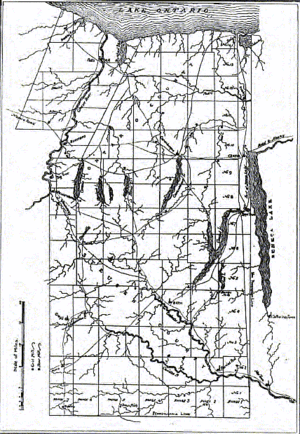
For a long time, the states of New York and Massachusetts argued over who owned land in what is now western New York. They settled this argument in 1786 with the Treaty of Hartford. This agreement said the land would be part of New York. But Massachusetts kept the "pre-emption right." This meant Massachusetts had the only right to buy land from the Native Americans there.
Later, this right was sold to different companies. The Holland Land Company eventually got the right to buy land in a large area. In 1797, the Holland Land Company made the Treaty of Big Tree. This treaty took away most of the Seneca tribe's land rights west of the Genesee River. But it left ten special areas, called reservations, for the Seneca people.
The Fellows v. Blacksmith case was about one of these reservations. In 1838, the Treaty of Buffalo Creek was signed. It said the Seneca people would move from New York to what is now Kansas. However, the Seneca people refused to move. A new treaty in 1842 changed things. It said the Seneca could keep two reservations, but they still had to give up the Buffalo Creek and Tonawanda reservations.
The Tonawanda Band of Seneca Indians later separated from the larger Seneca Nation. They became a federally recognized tribe in 1857, after this court case.
John Blacksmith's Story
John Blacksmith was a leader of the Wolf Clan within the Tonawanda Seneca tribe. Around 1826, he built a sawmill and a yard on his land in the Tonawanda Reservation. The treaties of 1838 and 1842 said that Native Americans who had made improvements to their land, like building a sawmill, should be paid for them. But Blacksmith refused to let people survey his property. So, he never received this payment.
The Ogden Land Company claimed they owned the Tonawanda Reservation because of the treaties. Agents from the company then used force to remove Blacksmith from his sawmill.
The Lawsuit Begins
John Blacksmith first sued the company's agents, Joseph Fellows and Robert Kendle, in 1846. He sued them for trespass (illegally entering his land) and assault and battery (hurting him). Blacksmith's wife and Ely S. Parker took over the lawsuit after Blacksmith passed away.
A jury in the New York Supreme Court first decided in favor of Blacksmith. The case then went through several appeals in New York state courts. Each time, the courts largely agreed with Blacksmith. They said that Blacksmith had the right to sue for trespass. They also said that the company's claim to the land was not valid because Blacksmith had not been paid for his improvements.
The case eventually reached the U.S. Supreme Court.
Arguments at the Supreme Court
John H. Martindale argued the case for the Tonawanda Seneca people. The arguments took place on January 15 and 17, 1857.
Ely S. Parker, one of the people representing Blacksmith's estate, was there in person. The New York Times reported that Parker was very knowledgeable about the case. He helped his lawyers understand the important points to make to the Court.
Chief Justice Taney was not present when the decision for Fellows was announced. He was busy working on another very famous case, Dred Scott v. Sandford, which was announced the next day.
The Supreme Court's Decision
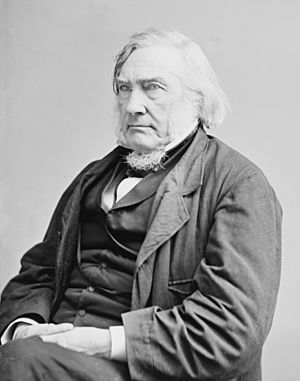
Justice Samuel Nelson wrote the unanimous decision for the Supreme Court. The Court agreed with the New York courts and sided with Blacksmith.
What the Treaty Meant
The Court noted that the treaties did not say how the Native Americans were supposed to be moved from their land. The company had simply used force to remove Blacksmith. The Court said that previous removals of Native Americans had always been done by the U.S. government. The government acted with its own authority and care.
The Court explained that forcing Native Americans to move in any other way would not be peaceful. It would also go against the government's duty to these "dependent people." The Court said that the government had treated the Seneca as a "quasi nation." This means they were seen as having some qualities of an independent country. Because of this, only the U.S. government had the power to carry out the treaty. Private companies could not use force or even go to court to remove the tribes.
The Court said that the Seneca people were like "wards to their guardian" in their relationship with the government. This relationship meant they should not be expelled by "irregular force and violence." The Court concluded that it was the government's job, not the company's, to make sure the treaty was followed.
Was the Treaty Valid?
The plaintiffs argued that the treaty was not valid. They said that the tribal leaders who signed it did not have the authority to give up the land. They also claimed that the signatures were obtained through fraud or force.
However, the Court did not agree to look into these claims. They said that once a treaty is signed and approved by the government, it becomes the "supreme law of the land." Courts cannot question how it was formed. This is similar to how laws passed by Congress are treated.
Other Related Cases
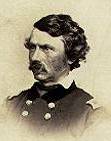
John H. Martindale, the Seneca's lawyer, also handled other lawsuits against the Land Company. These cases were brought under a New York state law. This law made it illegal for non-Native Americans to live on Native American lands.
One of these cases was New York ex rel. Cutler v. Dibble. In this case, the Supreme Court decided in 1858 that the state law was valid. It did not go against federal laws or treaties.
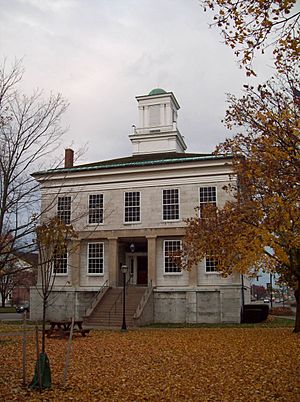
What Happened Next?
The "Enrolled Treaty" Rule
The main argument from the Seneca's lawyer, John H. Martindale, was that the Treaty of Buffalo Creek (1838) was not valid. He said it wasn't signed by the right leaders or that signatures were obtained by fraud. However, the New York courts and the Supreme Court did not accept this argument.
The Fellows case helped establish the "enrolled treaty doctrine." This rule means that once a treaty is officially approved, courts cannot question how it was made. This doctrine was later used in other cases. It sometimes made it harder for Native American tribes to argue that treaties were unfair or signed without proper authority.
Seneca Land Claims Today
A newspaper article from the time said that the case affected land ownership in a large part of New York. Even though the Seneca won the lawsuit, the Court's decision not to question the treaty's validity meant that the ownership of other lands was not challenged.
The Fellows decision was a victory for the Seneca people, but it was a limited one. It meant that as long as the U.S. government did not force them to move, the Ogden Company could not do so either. The Tonawanda Seneca tribe was never forced to move to Kansas. A new treaty in 1857 confirmed their right to a 7,549-acre reservation. This treaty ended 15 years of legal battles between the Tonawanda Band and the Ogden Land Company.
The Fellows case showed that the government still treated Native American tribes like "semi-sovereign nations" at that time.
Important People in the Case
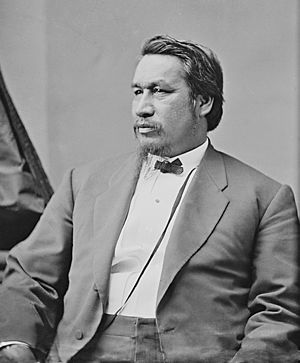
Plaintiff Ely S. Parker became a very important figure in American history. He joined General Ulysses S. Grant's staff during the American Civil War. He was the one who wrote the terms for the surrender at Appomattox Court House. After the war, President Grant appointed Parker as Commissioner of Indian Affairs. He was the first Native American to hold this important position.
The Seneca's lawyer, John H. Martindale, later argued another case before the U.S. Supreme Court. As New York Attorney General, he argued that New York State had the right to tax the Seneca people. But the Court disagreed. It cited Fellows v. Blacksmith, saying that until the Native Americans sold their lands and moved, they were still in possession of their original rights. This meant the state could not tax their lands.


